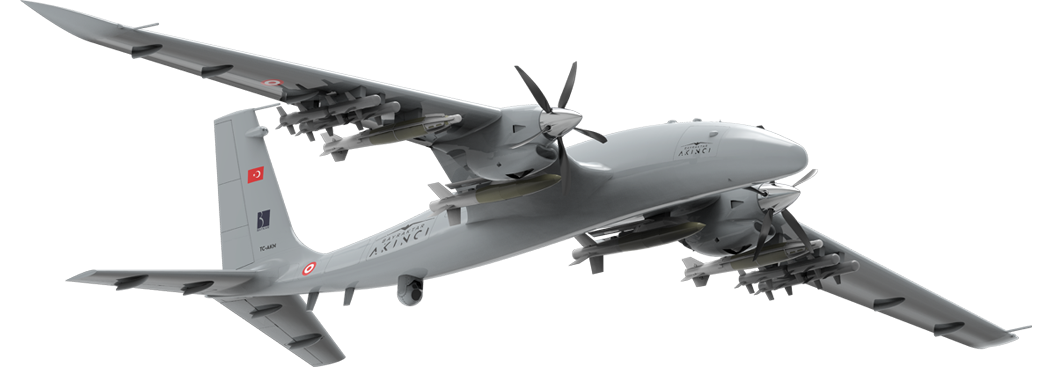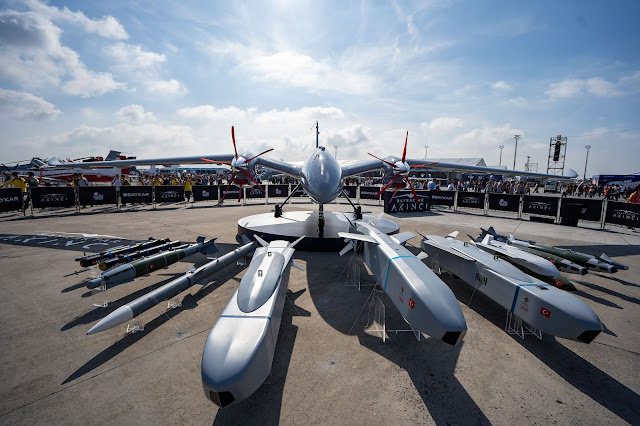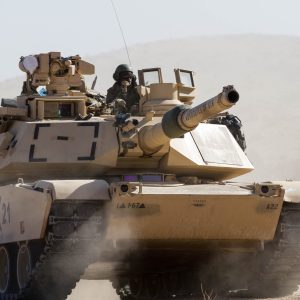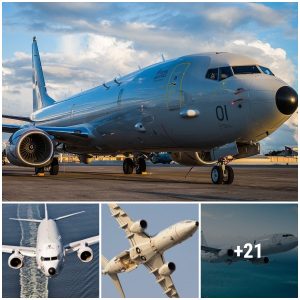The Bayraktar Akıncı is set to introduce a number of novel capabilities to the field of unmanned aerial warfare when it enters service with the Turkish Air Force later this year. These include several features not seen on any other type of UAV in the world before, most notably the ability to launch 250+km-ranged high-precision cruise missiles and beyond-visual-range air-to-air missiles (BVRAAMs) at targets as far as 100 kilometres away. These capabilities in practice turn the Akıncı into the first production multi-role unmanned combat aircraft in the world, and set the stage for increasingly effective replication of legacy aerial assets by unmanned counterparts.
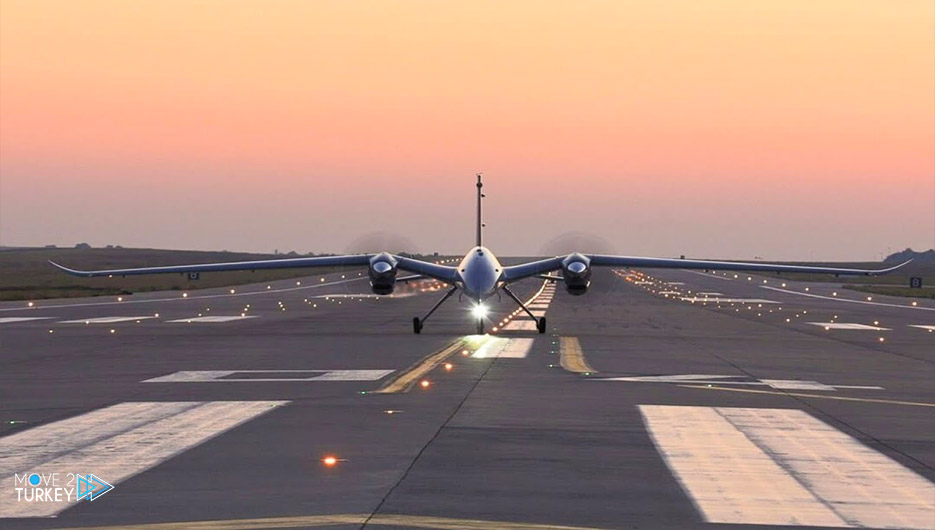
Loading…
Bayraktar Akıncı during trials
Apart from debuting this unique set of abilities, the Akıncı also significantly expands on Turkey’s existing unmanned warfare capabilities through a massive increase in payload capacity compared to systems such as the Bayraktar TB2 and TAI Anka. In addition to enabling the carriage of guided bombs that were too heavy to be carried by these UAVs, the Akıncı’s increased payload capacity also allows for a far greater number of smaller munitions such as the MAM-L to be carried. Indeed, up to 24 MAM-Ls can be brought to bear by the Akıncı compared to four on the TB2, positioning the Akıncı as the perfect system to annihilate entire armoured columns in just one sortie or to support friendly offensives by picking off enemy targets in support of advancing ground forces. In the latter role its 24(+)-hour endurance make it a particularly patient lurking threat.
As Baykar continues weapons systems integration on the Akıncı prior to its operational debut, several types of guided munitions are currently being tested to verify their use from the new platform. This already included a new member of the MAM family of smart munitions that was first tested in April 2021: The MAM-T with a range of just under 40km (compared to upwards of 14km on the MAM-L). The MAM-T will serve alongside the Teber, LGK, KGK and (L)HGK family of precision-guided munitions also destined for use on the Akıncı. These munitions consist of indigenously designed guidance kits mated to locally produced Mark-82, Mark-83 and Mark-84 iron bombs. As is evidenced by this rapidly growing family of ordnance, Turkish precision-guided munitions are being introduced as swiftly as the drones destined to carry them.

Especially the 900kg weighing Mark-84 is a daunting piece of armament, and also the heaviest bomb ever to be integrated on a drone. When fitted with a GPS/INS guidance kit, the bomb is known as the HGK-84. The HGK-84 can attain ranges of up to 28km (or 22km when launched from lower altitude), while a different variant known as the LHGK-84 is fitted with a laser-guidance kit for increased accuracy. [1] Yet another variant, the NEB-84, is a (guided) penetrator bomb designed for use against hardened surface and underground targets such as bridges and bunkers. The only other operational drone in the world capable of carrying the Mark-84 (through its U.S. guided variant the GBU-31) is the jet-powered General Atomics Avenger, a number of which operate on behalf of the U.S. Central Intelligence Agency (CIA).
To accommodate the seemingly endless variety of munitions, the Akıncı features up to eight underwing hardpoints and another one under its fuselage for a total of nine hardpoints. The latter is set to carry the heaviest ordnance cleared for carriage on the Akıncı, comprising the HGK-84 and the SOM-series of cruise missiles. A typical loadout could consist of two KGK-82 glide bombs with wing kits on the inboard pylons, two Teber-82 precision-guided bombs and eight MAM-Ls, as shown in the rendering below. This allows the Akıncı to set out to engage some high-value hardened target at long range, come across a convoy of enemy vehicles along the way and promptly destroy it, and then continue on to complete its mission.
Although already an unusually diverse platform, the Akıncı’s huge payload capacity of 1.350kg, the variety of its weapon loadouts and its 24+-hour endurance mean that it is also well suited to take over many of the ground attack missions currently assigned to Turkey’s 240-strong F-16 fleet. Replacing the F-16 in at least some of these roles frees up precious airframes which can then be used for air-to-air combat roles, at least partiallly decreasing the gap left now that Turkey has been excluded from the F-35 project as a result of its decision to purchase the Russian S-400 surface-to-air missile (SAM) system.
Arguably the most innovative aspect of the Akıncı is its capability to use air-to-air missiles (AAMs), consisting of the indigenous Bozdoğan IR-guided AAM and the (fire-and-forget) Gökdoğan BVRAAM, which uses an active solid-state radar to guide itself towards its target. The Akıncı’s AESA radar should enable it to autonomously pick out its targets at great range, and then engage them with either to hunt enemy slow-flying aircraft, drones and helicopters and to guard other drones. Though BVRAAM-armed Akıncıs would present a greater challenge than most air forces could hope to face, medium-range AAMs like the Bozdoğan could present a threat even to opposing fighter aircraft, being fast, very manoeuvrable (having off-boresight capabilities) as well as highly resistant to electronic countermeasures. Both of these missiles are currently still in development, and will likely take several years before complete integration on the Akıncı platform.
Another feature is the ability to carry several variants of the SOM family of cruise missiles designed to be used against enemy command posts, SAM sites, ships or any other target that requires a precision hit with a 230kg heavy explosive warhead. Though two variants of this family were designed specifically to be used against naval vessels, the range of the much smaller MAM-T already exceeds the air defence systems on all but four of the Greek navy’s ships. Though those are unlikely to be used in that role, this fact shows how swiftly the capabilities UCAVs and the precision-guided munitions they can carry have grown in the past decades.
Once in active service, the Bayraktar Akıncı will herald a new chapter in unmanned warfare – whether by firing cruise missiles at enemy targets from well within friendly airspace, destroying underground bunkers with NEB-84 penetrator bombs, bringing armoured columns to a grinding halt with up to 24 MAM-L munitions, targeting enemy air defence systems well outside of their range or by shooting down enemy aircraft, UAVs and helicopters. The variety in weapon loadouts means the Akıncı can easily be repurposed to carry out other tasks during the same (day-long) mission, allowing greater flexibility in operations than any drone of the past.
For countries interested in buying the Akıncı the fact that all the munitions (and their guidance kits) used for these tasks can be sourced directly from Turkey will surely be appreciated as well. Furthermore, the fact that the new UCAV adheres to the NATO standards for munitions means that NATO countries can integrate other or local manufactured munitions on the Akıncı. This does not extend to NATO countries only, and countries that are currently developing their own precision-guided munitions such as Azerbaijan and Pakistan can expect relatively simple integration (or even Turkish support with doing so) with the Akıncı. Its attractiveness to foreign customers might be precisely what ensures the Akıncı’s success, escaping the fate of a number of promising UCAV designs the world over that were ultimately only produced in scarce numbers. As such, it may well soon secure its role as one of the most significant upheavals in the annals of unmanned warfare.
